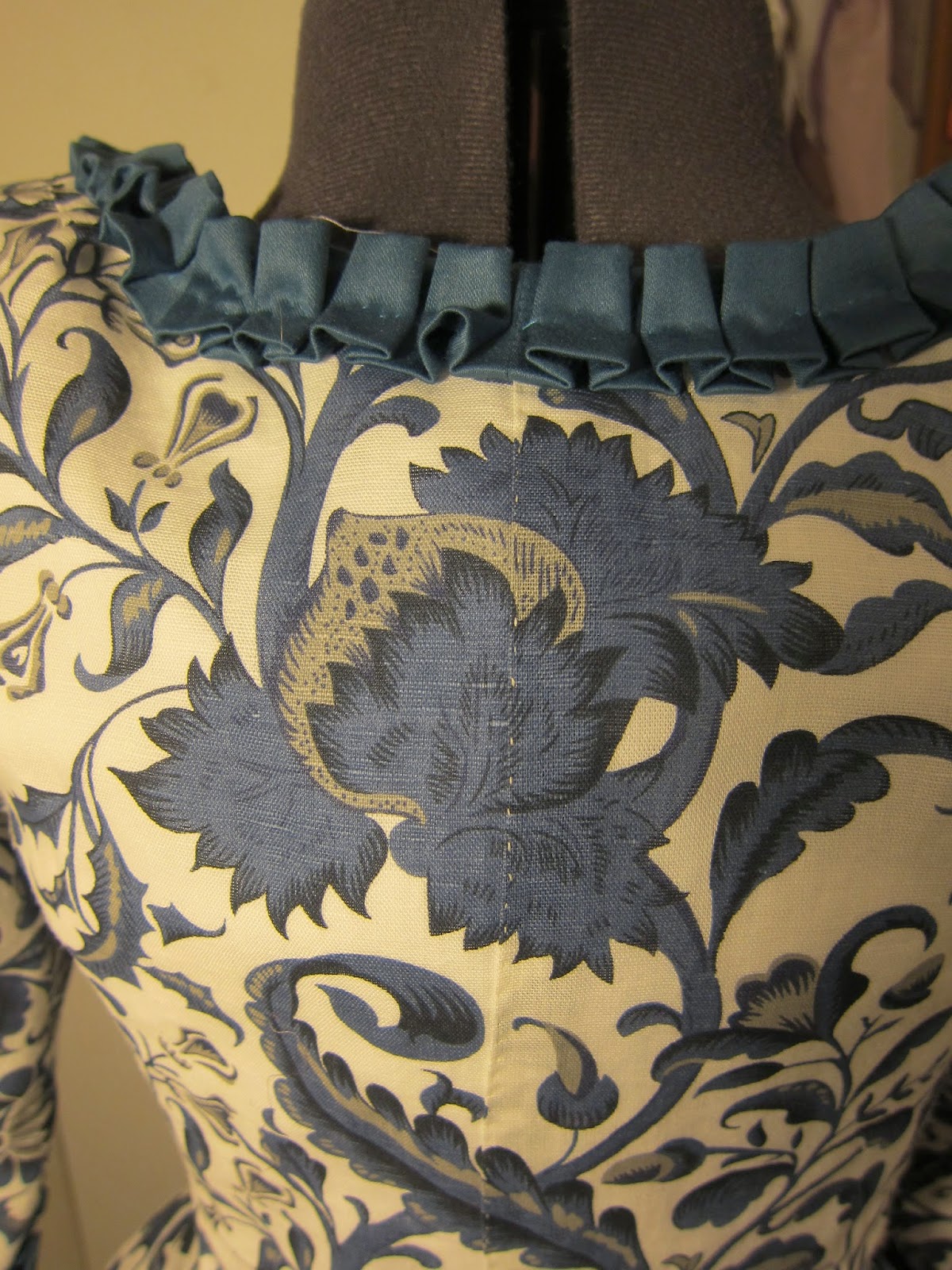After finally finishing the
underwear (I don’t like corsets!), it was time to move on to the fun parts. But
before cutting the silk I had bought for making a polonaise, I wanted to try the pattern with something less
expensive. I had bought the 1770 polonaise and petticoat pattern from
Period Impressions, with the intentions of keeping it simple, and follow the pattern and
instructions. As usually, I soon failed that intention. I decided to make a caraco like the 1775-85 Caraco in Patterns of
Fashion 1 as my test garment, so I modified the
pattern to look like that one.
For fabric, I bought long curtains with a
large blue floral print at IKEA. Not totally authentic, but I like it. (And what was left was
enough to make nice curtains for our living room of...)
When starting, I found out
that I wanted to try some period construction methods. Therefore it is
flat lined, with lapped seams, instead of the bag lining method in the
pattern.
 |
| Lapped seam at center back |
I think it makes sense – with lapped seams on the outside
it will be easier to adjust he fit during the construction. I also used a period way of sewing on the sleeves, as described in this tutorial: first sewing
the bottom half of the sleeve in the armscye, then putting the dress on a dress form or model and pleating the top part on the shoulder lining to fit the wearer, and then hiding the seam with the shoulder strap pieces. I found it to be easier to manage the
sleeves by draping them on my dress form dummy this way than trying to make pleats/gathering stay in
shape when setting it in the modern way. I made my caraco sleeves too wide to be
historically correct for this period– after a 1570s dress were I could barely get my arms high
enough to eat, I wanted to be able to move comfortably in this one.
 |
| Sleeve with pleating hidden under shoulder strap, and close-up of pleated trim |
The petticoat is made
from a cotton sateen I found in my stash. The different color of the flounce is due to lack of fabric, but I think it turned out quite nice, in a silly-18th-century
way. The puffs are inspired by pictures like these, and stuffed with poly fill.
 |
| Elisabeth Vigée Le Brun, “Marie-Antoinette se promenant dans un jardin vers 1780-1785.” Wikimedia Commons. |
The trimming on the caraco is the
petticoat flounce fabric, and strained my patience a bit as I had to glue the edges of the
fabric with fray-check before pleating it. As my fray-check bottle was
a bit un-cooperative, I had to use a small brush to apply it. The caraco is
closed by being needled together at the front. I like when there are period excuses not to put in all those hooks and eyes for closure!
 |
| Caraco and petticoat |

Inga kommentarer:
Skicka en kommentar